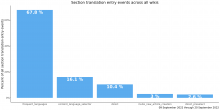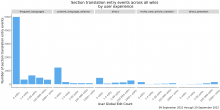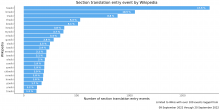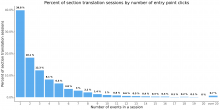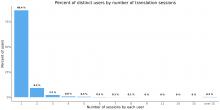As the initial entry points for Section Translation are implemented (T286645) and instrumented (T301222), we want to check the initial results we get from it.
Since it is early for a more elaborate visualization (to be done when more entry points are created and instrumented), this ticket proposes to create a simple query and report to show: The language selector entry point events grouped by month and wiki, next to the sections published in each case.
In this way, we can get a sense of the users that the entry point brings and the result in terms of published sections over time.
New Entry Points for Review:
| Entrypoint name | Event source |
| mflanguagesearcher | content_language_selector |
| mfrecenttranslation | recent_translation |
| mfrecentedit | recent_edit |
| mffrequentlanguages | frequent_languages |
| newbytranslation (To confirm) | invite_new_article_creation |
Result: Published report

